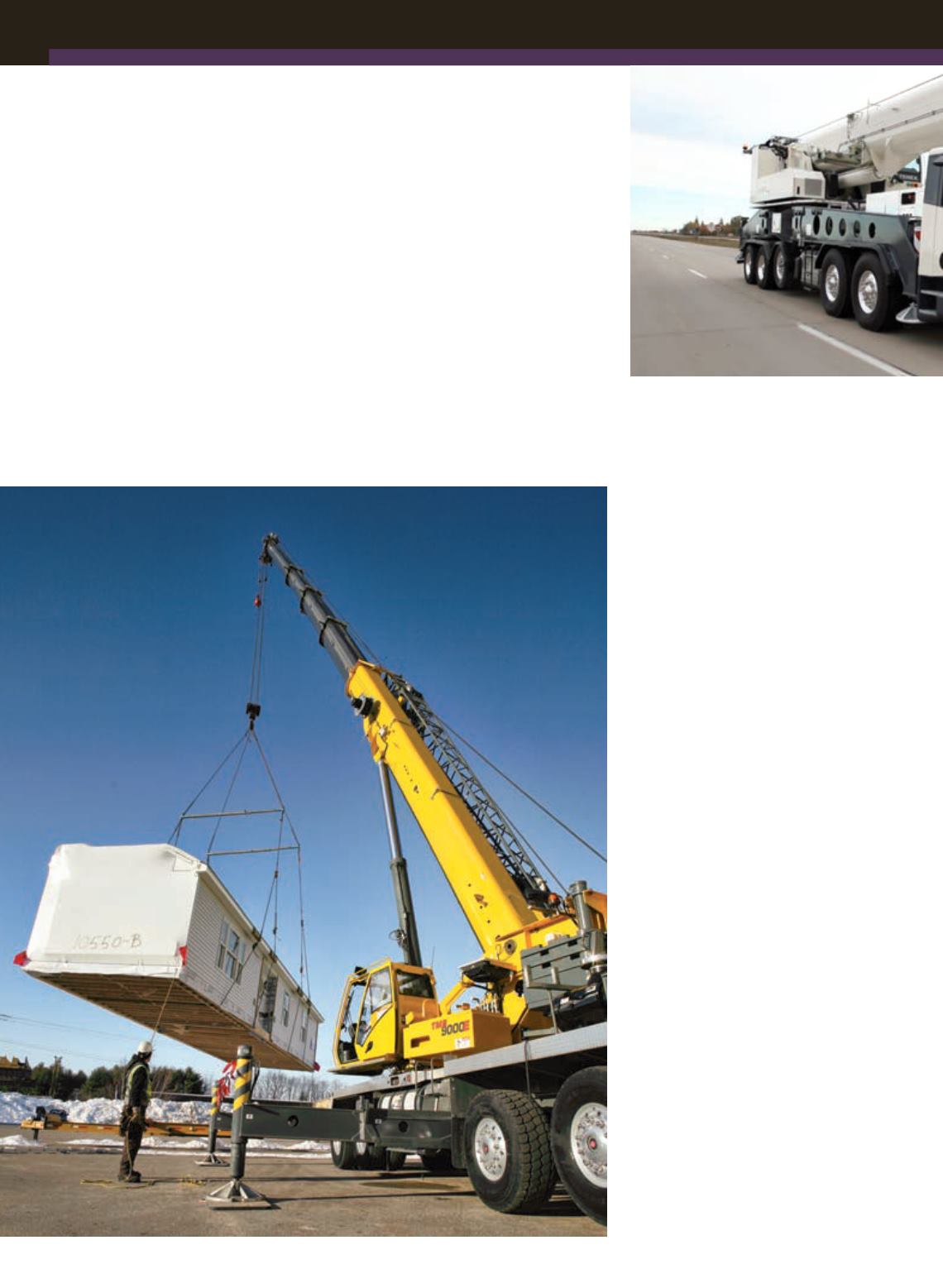
38
ACT
JUNE 2014
PRODUCT FOCUS
TRUCKCRANES
truck crane territory,Niwa admits they’ve
chewed intohismarket a little bit, but he’s
not concerned.
“Realistically, amanufacturer’s chassis
will still give you a far superior chart over
a truck chassis. Cost-wise, at least up
here, there’s notmuchdifference between
a bigpicker and a 60-ton truck crane.We
still like the choice of amanufacturer’s
truck crane over thepicker just because
it’s a little bitmore robust, has abetter
chart, andwe think theyhave a little
better degree of finesse in getting the job
done.”
Sodespite the boom inboom trucks,
don’t expect to see truck cranes go
anywhere. The oil and gas industries are
especially responsible for keeping truck
cranes indemand.
“In recent years, customers have been
utilizing truck cranes inoil and gas
exploration, and formaintenancework,”
saidAndreasCremer, global product
director of all-terrain and truck-mounted
cranes,ManitowocCranes. “As the
tools in the oil industry get bigger and
bigger, sodo their need for larger cranes.
Timing is an essential, critical factor for
customers in the oil and gas industries.
Having a good reliable crane that could
move fast betweenmultiple sites is
important, thusmaking truck cranes
popular among these customers.”
Canada and theGulfCoast of the
UnitedStates have seen a lot of this
activity, andCremer expects it to
continue in2014.
“In general, these cranes are beingused
by rental companies in the 100-ton and
below rangewhere all-terrain cranes
arenot roadable and taxi jobs require
the cranes to travel longdistances for
multiple jobs,” saidCremer. “While the
truck cranemarket has not traditionally
been a rentalmarket, wehave seen a
steadydemand for truck cranes from
rental companies. Thedemand for
theseproducts iswhatwewould see as
anormalmarket conditiondemand.
Nothing excitingnor alarming.”
Additionally, Cremer indicated
Manitowochas seen some very early
signs of recovery in thehousing industry,
but admittedlynot anywherenear the
level of pre-2008markets. Still, it could
mean good things down the road for
truck cranes.
Where’s themarket?
The truck crane customer base is difficult
to typecast, but the truck crane operator
is not.
“Your operator basicallyhas towear
awholepile of hats all inoneday,” said
Niwa. “We fill out two logbooks before
the crane is even startedup in the
morning. Theyhave tobe amaintenance
man, amechanic, a truckdriver, a rigger
and a bookkeeper. All in aday’swork.”
Trainingoperators canbe challenging,
Niwa adds, but once they’reup to speed,
theyderive a lot of joy from their craft.
“People likedoing it because youwork
withdifferent people everyday and in a
different location,” he said. “All-terrains
aremore geared toward longer jobs.Our
guys don’t like that.”
Owners of these cranes are as diverse as
your imagination, though.
“The truck crane is an extremely
versatile andmobilemachine andowners
capitalize on this bybeing equally
versatile and adaptable,” saidBarth. “The
only limiting criteriaof a truck crane is
that the sitepreparationbe suited to a
machine that travels on thehighway.”
The Terex Roadmaster
9000 has a lifting capacity
of 90 tons, amaximum boom length
of 164 feet and a tip height of 242 feet.
With a capacity of 90 tons,
a boom length of 36 to
142 feet and amaximum
tip height of 237 feet, the
Manitowoc TMS9000E is
a popular unit in the truck
cranemarket.


